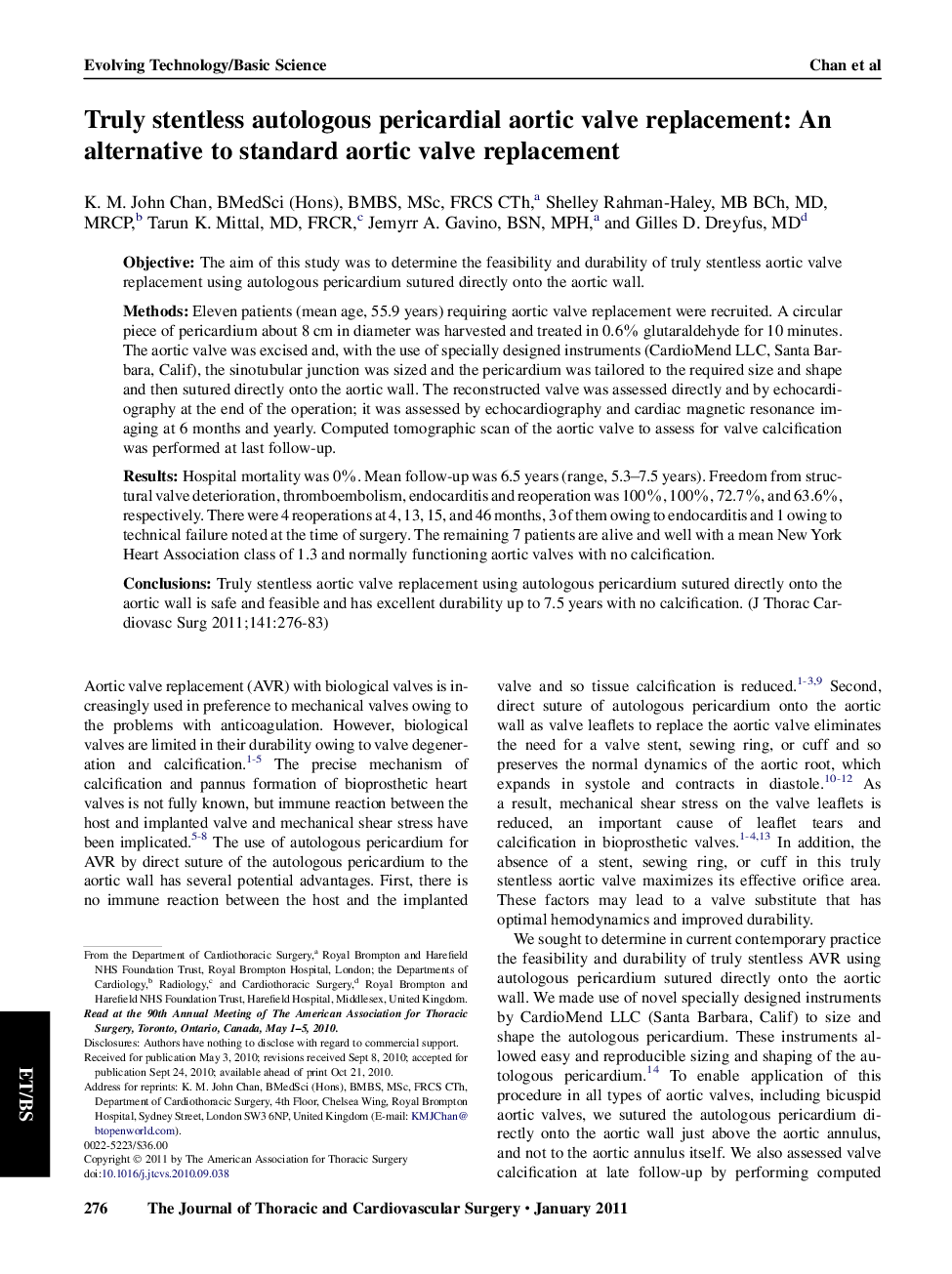| Article ID | Journal | Published Year | Pages | File Type |
|---|---|---|---|---|
| 2983309 | The Journal of Thoracic and Cardiovascular Surgery | 2011 | 8 Pages |
ObjectiveThe aim of this study was to determine the feasibility and durability of truly stentless aortic valve replacement using autologous pericardium sutured directly onto the aortic wall.MethodsEleven patients (mean age, 55.9 years) requiring aortic valve replacement were recruited. A circular piece of pericardium about 8 cm in diameter was harvested and treated in 0.6% glutaraldehyde for 10 minutes. The aortic valve was excised and, with the use of specially designed instruments (CardioMend LLC, Santa Barbara, Calif), the sinotubular junction was sized and the pericardium was tailored to the required size and shape and then sutured directly onto the aortic wall. The reconstructed valve was assessed directly and by echocardiography at the end of the operation; it was assessed by echocardiography and cardiac magnetic resonance imaging at 6 months and yearly. Computed tomographic scan of the aortic valve to assess for valve calcification was performed at last follow-up.ResultsHospital mortality was 0%. Mean follow-up was 6.5 years (range, 5.3−7.5 years). Freedom from structural valve deterioration, thromboembolism, endocarditis and reoperation was 100%, 100%, 72.7%, and 63.6%, respectively. There were 4 reoperations at 4, 13, 15, and 46 months, 3 of them owing to endocarditis and 1 owing to technical failure noted at the time of surgery. The remaining 7 patients are alive and well with a mean New York Heart Association class of 1.3 and normally functioning aortic valves with no calcification.ConclusionsTruly stentless aortic valve replacement using autologous pericardium sutured directly onto the aortic wall is safe and feasible and has excellent durability up to 7.5 years with no calcification.
